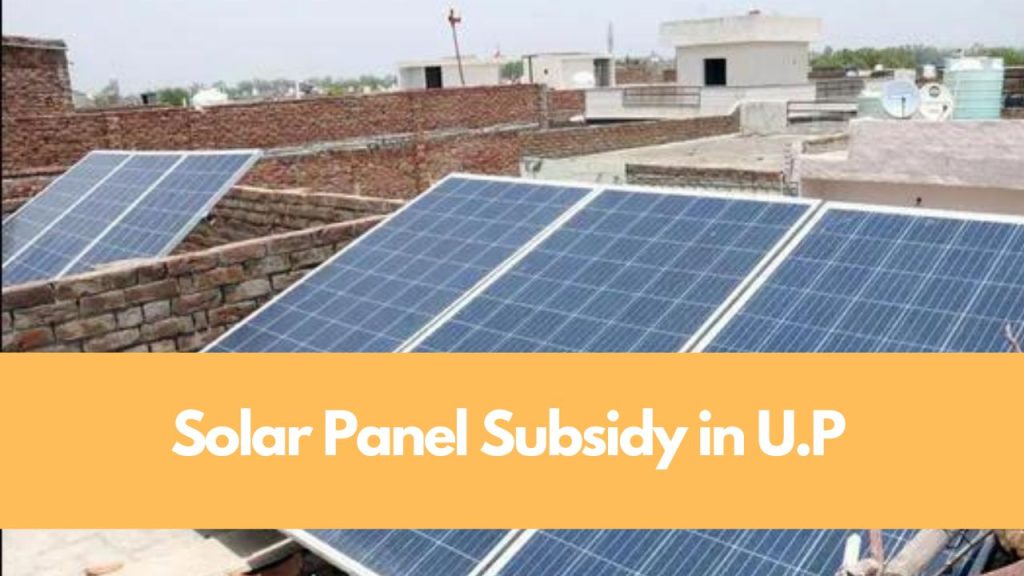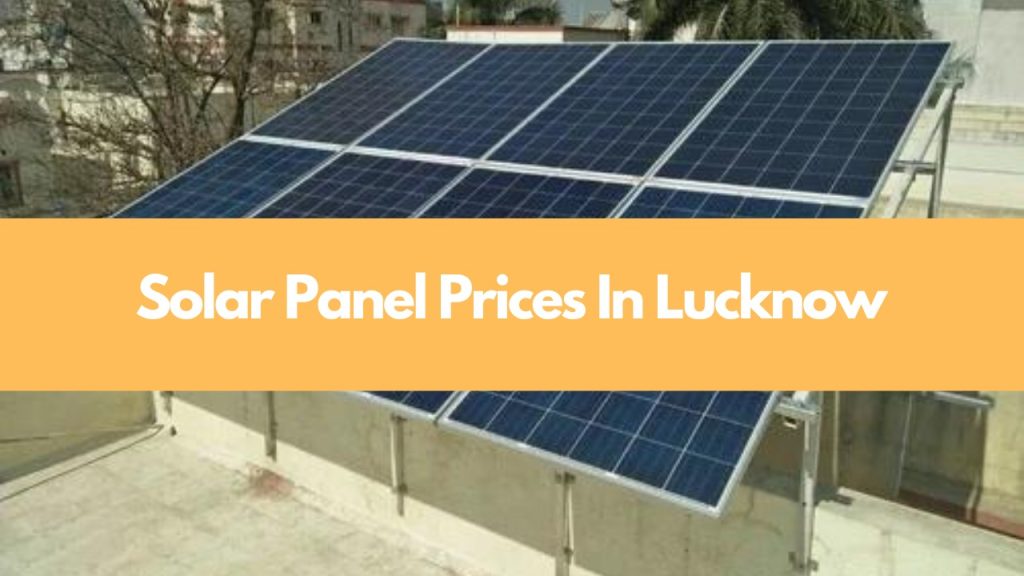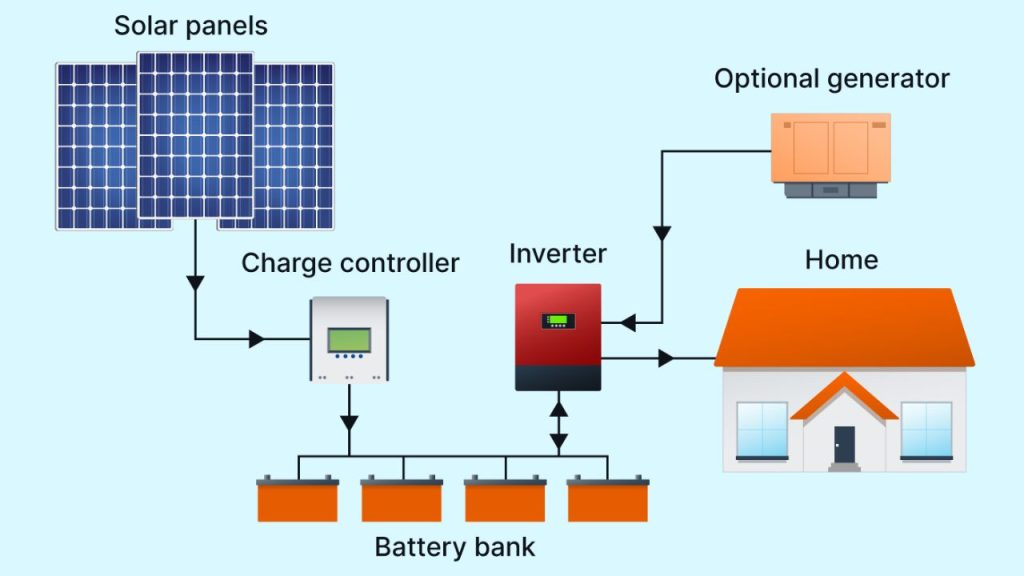Solar Panel Subsidy in UP
In today’s world, renewable energy sources like solar power have become essential to combat climate change and reduce our dependence on fossil fuels. To encourage the adoption of solar panels, the government of Uttar Pradesh has introduced a solar panel subsidy in the UP program. This program aims to financially support individuals, businesses, and organisations interested in harnessing the sun’s power. Explore the benefits of solar panel subsidy in UP and guide you through the application process.
The Uttar Pradesh government offers subsidies to offset the cost of installing solar panels. These subsidies help reduce the upfront investment required, making solar power a viable option for a wider range of individuals and entities.
The Solar Panel Subsidy in UP program with solar panel prices in lucknow is designed to make solar power more affordable and easily accessible for residents, promoting the adoption of clean energy and reducing reliance on traditional electricity sources. The government has implemented subsidies for home solar panels as part of this initiative, aiming to support and encourage the transition to sustainable energy solutions.
Benefits of Solar Panel Subsidy in UP
- Lower Electricity Bills: One of the significant advantages of installing solar panels is the potential for reduced electricity bills. By generating electricity, you can offset the energy purchased from the grid, resulting in significant savings.
- Environmental Benefits: Solar power is clean and renewable and does not produce harmful greenhouse gas emissions. By installing solar panels, you can reduce your carbon footprint and contribute to a more sustainable future.
- Long-term Savings and Income Generation: Excess electricity from your solar panels can be fed back into the grid through net metering. This offsets your energy consumption and can earn you credits or income from the electricity company. Over time, this can lead to substantial savings and even income generation.
- Increased Property Value: Solar panels can increase the value of your property. Prospective buyers often prioritize energy-efficient homes, and solar panels can make your property more appealing in the real estate market.
Let’s delve into the details of this solar panel subsidy according to solar panel price programme:
| Solar System Size | Estimated Price Range | Applicability of Solar Panel Subsidy in UP | Prices After Solar Panel Subsidy in UP |
| 1kW Solar System | Rs. 75,000 – Rs. 85,000 | Rs. 18,000 | Rs. 57,000 – Rs. 67,000 |
| 2kW Solar System | Rs. 1,50,000 – Rs. 1,70,000 | Rs. 18,000 x 2= Rs. 36,000 | Rs. 1,14,000 – Rs. 1,34,000 |
| 3kW Solar System | Rs. 1,89,000 – Rs. 2,15,000 | Rs. 18,000 x 3 = Rs. 54,000 | Rs. 1,35,000 – Rs. 1,61,000 |
| 4kW Solar System | Rs. 2,52,000 – Rs. 2,85,600 | Rs. 18,000 x 3 + Rs. 9,000 x 1 = 63,000 | Rs. 1,89,000 – Rs. 2,22,600 |
| 5kW Solar System | Rs. 3,15,000 – Rs. 3,57,000 | Rs. 18,000 x 3 + Rs. 9,000 x 2 = Rs. 72,000 | Rs. 2,43,000 – Rs. 2,85,000 |
| 10kW Solar System | Rs. 5,31,000 – Rs. 6,07,000 | Rs. 1,17,000 | Rs. 4,14,000 – Rs. 4,90,000 |
Types of Solar Panel Subsidy in UP
1. Government Grants and Rebates
Many governments provide grants and rebates to offset the cost of solar panel installations. These financial incentives can significantly reduce the upfront investment required, making solar energy more affordable for residential and commercial consumers. Governments often collaborate with local utilities and energy agencies to administer these programs, ensuring that eligible individuals.
2. Tax Credits and Deductions
Tax credits and deductions are other forms of solar panel subsidy in UP according to solar panel price that individuals and businesses can leverage. These incentives allow taxpayers to claim a portion of their solar panel expenses as a credit against their income tax liability or deduct the expenses from their taxable income. By reducing the overall tax burden, these subsidies make solar panel installations more financially viable and attractive.
3. Feed-in Tariffs and Net Metering
Feed-in tariffs and net metering policies enable solar panel owners to sell excess electricity generated to the grid. Under feed-in tariff programs, electricity providers purchase surplus energy at a predetermined rate, ensuring a consistent income stream for solar panel owners. On the other hand, net metering allows solar panel subsidy in UP, owners to offset their electricity bills by crediting excess energy produced during the day and consuming it during periods of low sunlight. Both mechanisms provide financial incentives and encourage the widespread adoption of solar panels.
Eligibility and Application Process of Solar Panel Subsidy in UP
1. Residential Eligibility
Solar panel subsidy in UP for residential consumers are typically available to homeowners, renters, and landlords. Eligibility criteria may vary depending on the region and the specific subsidy program. Factors such as the property’s age, energy efficiency, and the capacity of the solar panel system may influence eligibility. It is advisable to consult local authorities or solar energy experts to determine the specific requirements and application procedures.
2. Commercial and Industrial Eligibility
Commercial and industrial entities can also benefit from solar panel subsidies. These subsidies encourage businesses to invest in renewable energy, thus reducing their environmental impact and operational costs. Eligibility may be based on factors such as the size of the solar panel system, the type of business, and its energy consumption. Various subsidies cater specifically to small and medium-sized enterprises, making it easier for them to adopt solar energy solutions.
Benefits of Solar Panel Subsidy in UP
Whether you choose an easy solar transition with a low-priced 3kW with solar panel subsidy in UP or a larger capacity system, you can enjoy the following advantages of generating and using zero-cost, clean solar electricity.
- Cost Savings on Electricity Bills
Sunshine is inexhaustible and available in abundance in most states without impediments. Putting a solar power plant in your UP home is a one-time investment that promises decades of low-cost power supply as high-efficiency solar panels promise daily output of energy for a lifespan of 25 years, after which they give less and less power.
Solar energy can offset a major part of your monthly grid usage or even eliminate energy bills. During peak sun hours, your system’s solar energy output exceeds your home’s daily electricity demand. The surplus generated is sold to the local grid for solar credits.
Process for Installing Solar panel system
If you plan to set up your home solar energy plant through the National Portal and avail of solar subsidy in UP, here is the procedure that you need to follow:
Step 1: Registration
The National Portal for Rooftop Solar is the official platform launched for online processing and solar panel subsidy in UP disbursement. As a homeowner switching to solar, you must register on this online portal.
Step 2: Apply for Rooftop Solar
Once registered, you can log into your account anytime and submit the application for solar panel subsidy in UP.
Step 3: Technical Feasibility Approval/TFR
Your local DISCOM company receives and processes your online subsidy application for technical feasibility. Approval is given if all the details furnished in the application are correct. Else, the application is sent back under rejection/correction.
Step 4: Selection of Vendor and Plant Installation
Upon receiving an approved TFR status, you can finalize a registered vendor (a solar company impaneled with DISCOM). Selecting a registered vendor to qualify for a subsidy on solar panel systems in UP is necessary. Sign the ALMM declaration form with your vendor before proceeding to the plant installation. It’s a model agreement prescribed by MNRE and works to protect consumers’ interests.
Step 5: Submit Installation Details
After your UP solar power plant has been installed per the technical specifications and standards mandated by the MNRE, submit the documents related to your RTS installation in the National Portal. Also, upload a photo of the applicant with the rooftop solar system. Thereupon, inspection and net-metering of the solar system are performed.
Step 6: Inspection by DISCOM
DISCOM officials inspect your RTS plant on-site and ensure that the installation conforms to the MNRE’s technical specifications and standards. After the successful inspection, the DISCOM officials install the net metering system.
Step 7: Project Commissioning Status
The DISCOM official approves your solar panel subsidy in UP, application online upon successfully inspecting your RTS plant and integrating the net meter. A commissioning certificate is generated, which can be viewed in the applicant’s account.
Step 8: Subsidy/CFA Request
Once you have the commissioning certificate, you must provide bank details and raise the subsidy/CFA claim request online.
If the details are correct, the final subsidy/CFA amount is released directly into the provided bank account within 30 days of approval.
For queries related to Solar Panel Contact Umangot Solar, Solar company in Lucknow with all the details related to solar panel price in lucknow
WANT TO SLASH YOUR ELECTRICITY BILL?



